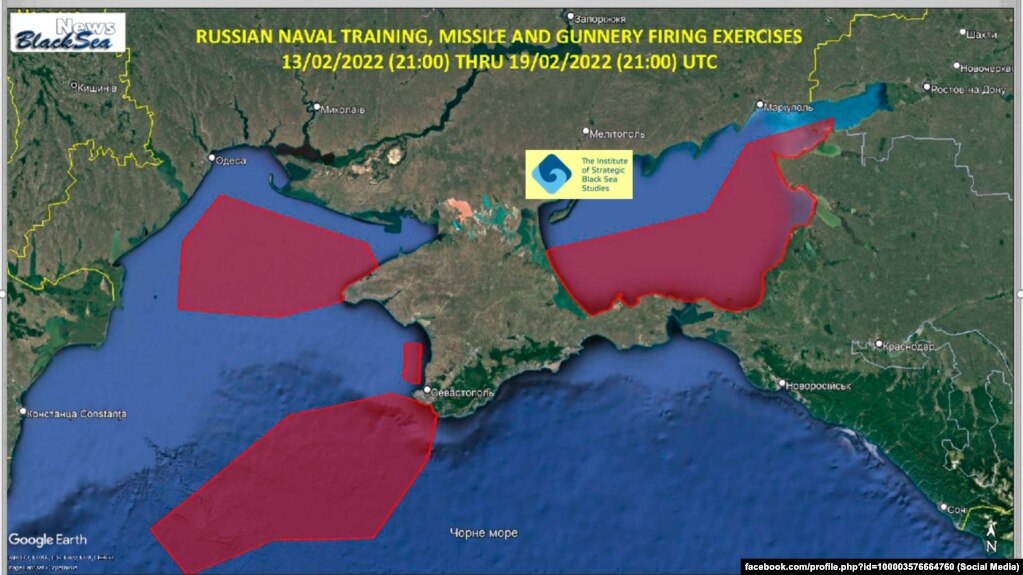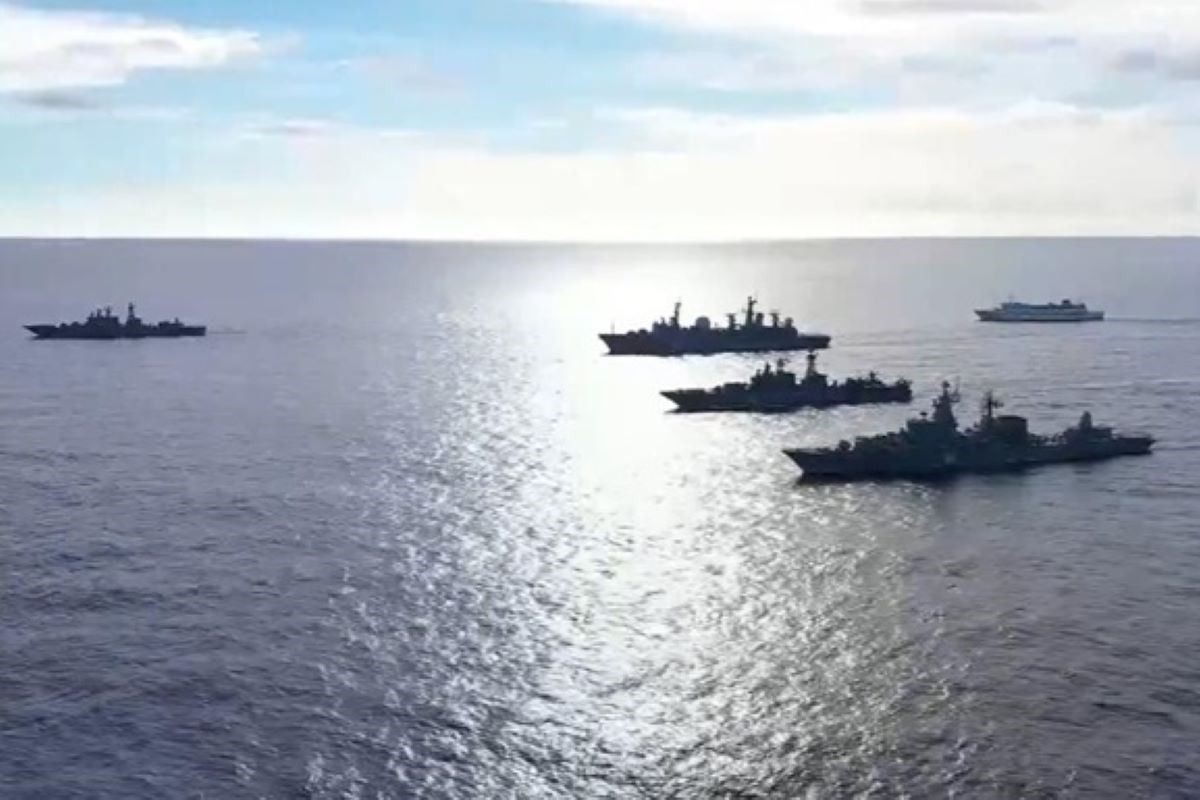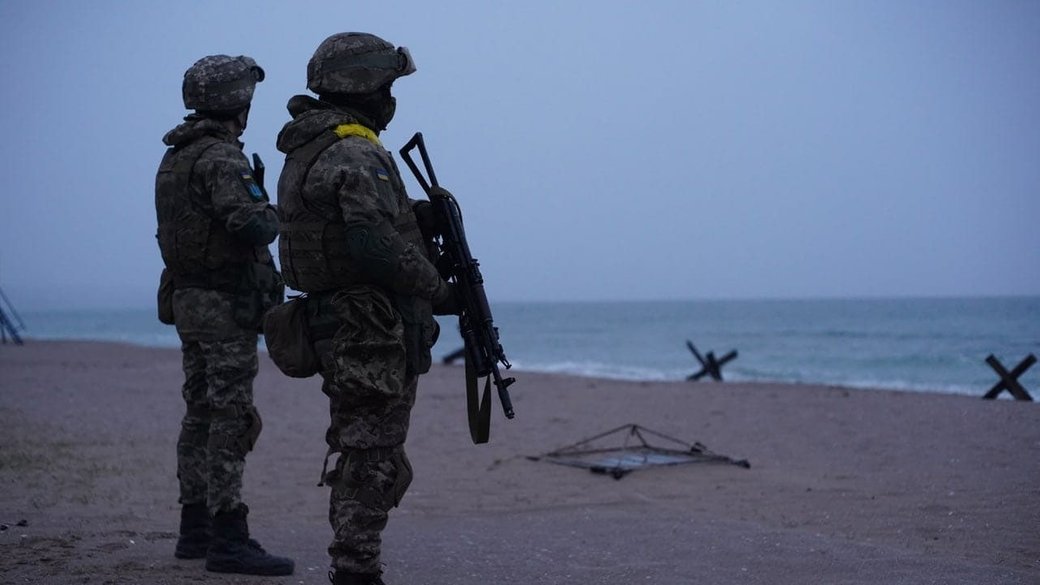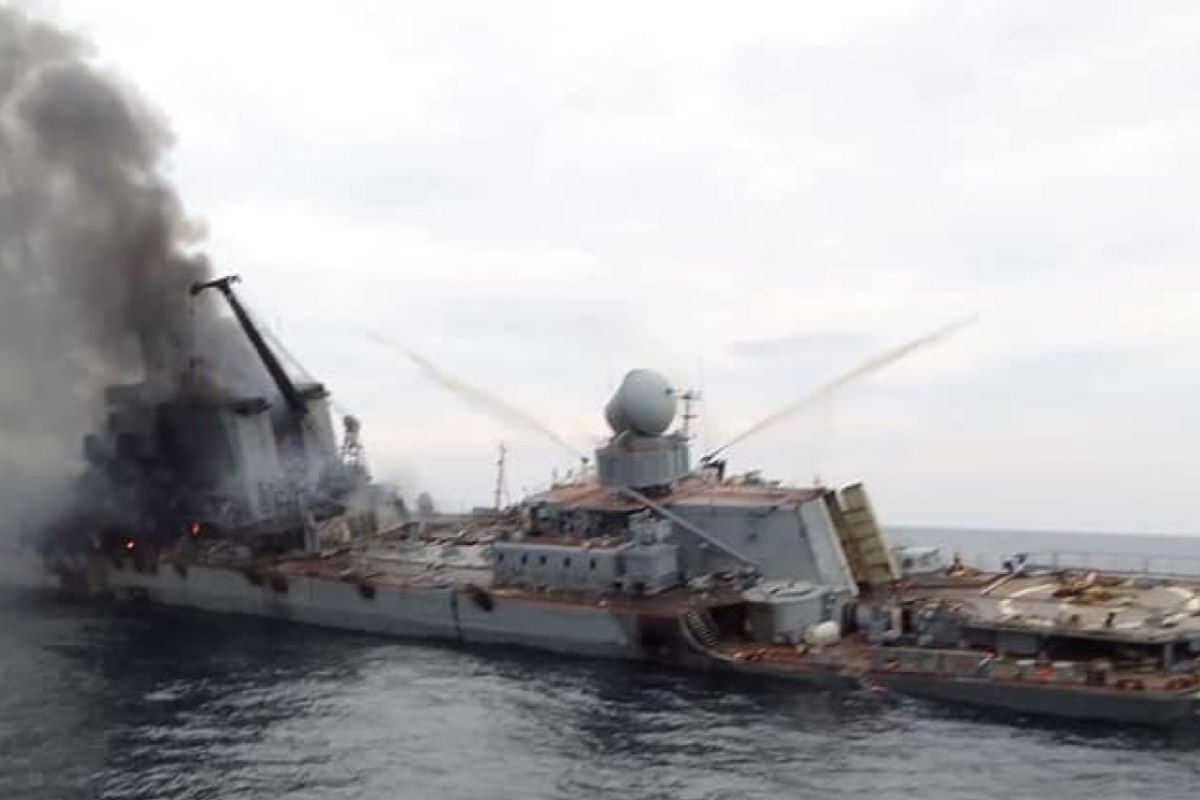The Black Sea Report (3): The main tasks of the Black Sea Fleet as of February 24, 2022

The Monitoring Group of the Black Sea Institute of Strategic Studies and BlackSeaNews continues the publication of the analytical report: Situation in the Black Sea Over the Course of Russian Aggression Against Ukraine.

The main tasks of the Black Sea Fleet as of February 24, 2022
Blockade of sea routes
in order to cause significant losses to the Ukrainian economy, the majority of whose exports were almost unalternatively sea-bound.
Among other things, the blockade of sea routes was resolving the issue of the NATO member states’ hypothetical assis-tance to Ukraine. It also greatly simplified the work of intelligence to identify the AFU defense system, the work of sabotage and reconnaissance groups and agents in the southern districts of Odesa region, the destruction of critical civilian and military infrastructure and so on. Also, the February-March 2022 demonstrative BSFRF actions near the Ukrainian coast were meant to ensure a significant pullback of the AFU reserves from the critical for Russia Crime-an and Donetsk areas.
Furthermore, the successful blockade was to create favorable conditions for solving the next BSFRF task —
conduct a naval landing operation in the Bessarabian operational area with further development of the offensive towards the Republic of Moldova.
Given the actual lack of effective counteraction capabilities by the Ukrainian Navy, at the first stage of the blockade, the Russians used mostly auxiliary fleet support vessels and ships/boats that did not have significant striking capabilities. Later, the strikes/damage to some of the ships/vessels carrying out the blockade made the Russians switch to the standard tactics of using air defense carriers and missile strike weapons.
Amphibious assault operation (MDO)
As a logical continuation of the blockade, Russia planned a further amphibious assault on the accessible areas of the southern coast of Odesa region.
The result of the MDO was to create conditions for the occupation of Odesa region, provide access to the border of the so-called Transnistria (PMR) and the Autonomous Territorial Unit of Gagauzia (ATUG), and occupy the Republic of Moldova. In fact, for that purpose, in addition to those already stationed in the Black Sea, several project 775/775M amphibious assault ships had been deployed from Russia’s Northern and Baltic Fleets.
In total, the amphibious assault grouping numbering 13 ships could simultaneously deliver up to 5,500 troops, 100 tanks and 145 armored personnel carriers (APC) to the Odesa region coast. The plan was for the amphibious assault ships to be used only at the initial stages of the landing, while with the seizure of berthing facilities and ensur-ing the safety of navigation, the operation was to expand by involving civilian vessels — ferries, RoRo and so on — that by then, had already been seen deploying troops in the Kerch Strait and Sevastopol.

On February 25, 2024, the next day after the start of the large-scale aggression, the Russians attempted to land a companysized tactical amphibious assault unit, possibly reinforced by a subversive reconnaissance group, near the village of Koblevo, Mykolayiv region. The likely purpose of the landing was sabotage in the area of the Novoazovsk-Odesa M14 highway, along the Mykolaiv-Odesa section, destruction of the critical logistics hubs in the rear of the AFU and, possibly, facilitation of an amphibious assault in the area of the Yuzhny seaport.
As a result of poor organization and planning, the unit landed directly on the positions of the Ukrainian 28th Separate Mechanized Brigade and was destroyed, loosing several high-speed boats and up to 25 personnel.
As further developments showed, Russia’s Ministry of Defence (MORF) was forced to significantly adjust its plans: the Ukrainian resistance and competent decisions of the Ukrainian Navy Command first simply stopped the unfolding of the Russian scenario, and later made the MDO impossible in principle.
The surface situation coverage system, the sea coast defense, mine placement, and certain informational operations — all had undermined the determination of the BSFRF Command to conduct the MDO, leading to a loss of time and initiative and rolling back its activities to the level of “protecting and defending the naval bases” and “spo-radic shelling of the Ukrainian territory.”
Strikes on the territory of Ukraine
Overall, in the Black Sea, the Russian Federation has a fairly wide arsenal of weapons capable of striking the territory of Ukraine, namely: Bastion, Iskander, Oniks and Bal missile systems — 15th Separate Coastal Missile and Artillery Brigade in Sevastopol and 11th Separate Coastal Missile and Artillery Brigade in Utash village (Krasnodar Krai) — ships and submarines carrying Kalibr and other anti-ship missiles, such as Moskit, Termit, P-1000 and P-800 (Oniks), plus a wide range of aviation weapons.
However, Turkey’s closure of the Bosphorus and Dardanelles Straits to warships, the destruction of the Moskva missile cruiser on 14.04.2022 and damage to a number of other ships, significantly reduced the strike potential and disrupted the plans of the Russian military and political leadership to achieve a quick victory in the Black Sea region.

Moreover, due to the Russian miscalculations in preparing the so-called Special Military Operation (SVO), including in assessing the prospects of Ukrainian fierce resistance, the resources allocated for the Black Sea theater of operations got quickly spent on the objectives in other areas. According to available data, lacking the ability to quickly replenish the supply by manufacturing it, Russians were even forced to deploy to the occupied Crimea missile stock from its Northern and Baltic Fleets, as well as from Syria.
Finally, the personnel preparing for the MDO in Odesa region were urgently redeployed to the Mariupol direction and ended up suffering significant losses there, which naturally, also affected the amphibious assault operation capacity.
Subsequently, before the active use of Shahed-136/131 strike UAVs began, the Russians had been forced to significantly roll back and adjust their fire damage plans against Ukrainian targets.
With the start of the Shahed-136/131 UAVs use, those have become Russia’s main means for launching massive strikes on Ukraine. And if at first the Russians used Iranian-made drones, since the end of the second quarter of 2023, they began using Russian-made Geranium-2 UAVs of the Shahed-136/131 type, partially of large-scale assembly.
In the fall of 2023, the Russians likely made a deal with the N.Korea (DPRK) leadership on the supply of North Korean ballistic missiles of the HVASON 11GA (KN-23) type, that to a limited extent, were later used against critical infrastructure in the northern and eastern Ukraine.
Meanwhile, the use of HVASON 11GA (KN-23) remains a political issue, despite the clear evidence of its use.
In February 2024, the Ukrainian authorities for the first time officially announced that the Russians had used hypersonic missiles of the Zircon type, code name 3M22, to strike Kyiv. Despite the bravura claims, the “unique missile indestructible by the existing air defense systems," turned out to be quite destructible even by the outdated systems.
The missile speed — from 9000 to 11000 km per hour — that, incidentally, was lower than claimed by Russia, has not provided significant advantages and, but most importantly, the missile wasn’t accurate enough. Thus, it’s likely that Zircon’s first combat launches were merely pilot ones, and that it will be further improved over time.
* * *
Read the previous part of the report Composition of the Warring Parties' Forces and Russian Black Sea Fleet Objectives at the Opening Stage of Aggression HERE.
* * *
 This article has been prepared with the support of the European Union in Ukraine. The content of the article is the sole responsibility of the authors and does not necessarily reflect the position of the EU
This article has been prepared with the support of the European Union in Ukraine. The content of the article is the sole responsibility of the authors and does not necessarily reflect the position of the EU
More on the topic
- 24.06.2024 The Black Sea Report (Part 1 NEW). Losses of the Russian Navy in the Black Sea in 2022-2024. Updated database
- 14.06.2024 The Black Sea Report (5): The situation in the Black Sea as of April 2024 and ways to improve the AFU performance
- 14.06.2024 The Black Sea Report (4): Summary of the 2022-2024 Developments in the Black Sea Theater of Operations
- 10.06.2024 The Black Sea Report (2). Composition of the Warring Parties' Forces and Russian Black Sea Fleet Objectives at the Opening Stage of Aggression
- 11.05.2024 The Black Sea Report (Part 1). Situation in the Black Sea During the Russian Aggression Against Ukraine in 2022-2024.
- 26.02.2020 Closure of the Black Sea on February 25, 2020
- 25.02.2020 Closure of the Black Sea on February 23, 2020
- 18.02.2020 Closure of the Black Sea on February 17, 2020
- 02.02.2020 Closure of the Black Sea on February 1, 2020
- 03.01.2020 Closure of the Black Sea on January 2, 2020
- 01.01.2020 Closure of the Black Sea on the last day of 2019
- 10.09.2014 All Russian Black Sea Fleet assault ships return to the Black Sea by September 7 - details